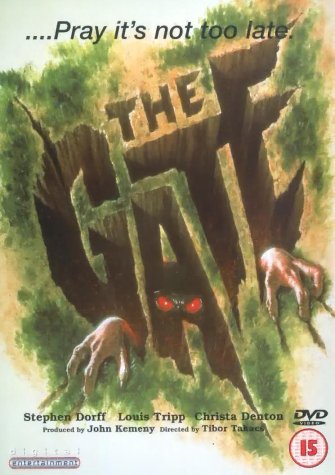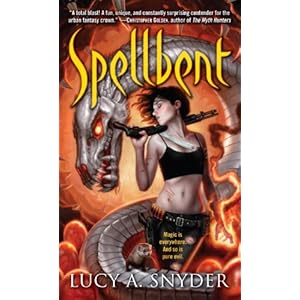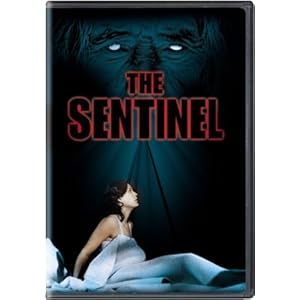
By Nickolas Cook
Editor-In-Chief
The Black Glove Magazine
You know, these editorials sometimes turn into nothing more than rants. I sit here and pretty much bitch about the state of horror cinema in America, how it's going down the tubes, turning into sparkly vampires and PG13 non-horror, listless excuses for entertainment puked up by big studios who not only don't know how to make a horror film, but probably couldn't even correctly define a real horror movie if they had to do so.
But this month...well, this month is going to be a little different. This time I'm calling bullshit on so-called horror fans who think it's uber-cool to sit in a crowded theater and make loud remarks about the movie, as if they're in the their living room or something. But, worse, this is about a disturbing trend in these moron free-for-alls which has me re-considering the entire genre and its fanbase.
There was an editorial I wrote back in April 2010 (issue #10) in which I ranted about the state of the industry, had some choice words about idiot producers such as Michael Bay, Hollywood's latest moron-du-jour, and how movies like the Twilight Saga are basically turning American horror cinema into a huge joke. I made some rather disparaging comments about the age of the average Twilight Saga fan and how their mentality was hardly something to be too concerned with when making any movie- i.e., none too sharp, with an emotional palette of...well...a teenager.
Well, as if the gods themselves had to prove how terrible this mentality has become, how far reaching this insidious "Dumb and Dumber-Beevis and Butthead-MST3K" movie viewing experience has become, I attended an annual event here in Tucson that really brought it home how bad things have become for intelligent horror fans.
Every year our local art house theater, The Loft, puts together their All-Nite Scream-O-Rama. They usually find the original 35MM prints of classic horror films from the 70s and 80s, put together some fun trivia, give away prizes, get a guest from one of the movies, etc., etc.
Now, this is something my wife and I have tried to do every year, with the exception of last year, when I was healing up from a nasty surgery to my Achilles tendon (I've had 4 of them now; if you see me at a convention, ask me and I'll show you my 'shark bite' leg). Most years, the festival goes on for over 12 hours, and we're exhausted by the time its all done, but we have a good time.
Mostly.
We attended the 2008 Scream-O-Rama, and even then I noticed that there was a certain amount of irritating yacky-yack going on during the first couple of movies. I figured it was just the fringe crowd, casual horror fans who were looking for a place to hang out for a few hours, the ones that had no intention of sticking it out for the whole event. I was correct in 2008; the fringe folks were gone by the time The Gate (1987) hit the screen around 11PM or so.

We had a good time the rest of the night, enjoyed the experience. It felt like when I was a kid again, watching the old stuff, feeling some of the old feelings. Even the popcorn tasted the same.
This year...well, this year was a completely different experience altogether. There was the usual amount of playfulness and yacky-yack that started during the first movie, "The Howling" (1981).

One might argue it's supposed to be, at least in part, a dark comedy. And while that might be true, what these people were laughing at weren't the clever injokes and dialogue with which screenwriter John Sayles and director Joe Dante had peppered the film. They were laughing at the 80s hairstyles, the music, even the cars (?!) used in certain scenes. They most definitely weren't the type of true-blue horror fans who were getting the real jokes meant for horror fans. They even laughed, mind you, during the opening credits when Slim Pickens' name appeared.
Come on!
Seriously?
You've never heard of this guy?
I expected what happened in 2008 to happen again, so I sat there patiently waiting, rolling my eyes, grinding my teeth, whenever these yahoos made a joke out of something that wasn't meant to be funny. But unfortunately what I had taken as the fringe folks didn't go away this year. They stuck it out through the whole night.
That's over 12 hours of listening to snarky Beavis and Butthead comments, and the multiple running MST3K style commentaries through every fucking movie.
Now, of course, some of the movies were meant to be funny on various levels. Like "The Howling" and "The Texas Chainsaw Massacre Part II" (1986).

I'm not an idiot. I get that. I appreciate those as well.
But some, like David Cronenberg's "The Brood" (1979), were clearly NOT meant to be funny.
If you've never seen it, there isn't a spot of humor to "The Brood". It's basically about a mentally disturbed mother who creates evil little monsters, birthing them from her body like ripe tumors, sending them forth to exact revenge on anyone she feels has made her unhappy in her life. She's even so hellbent on vengeance against her ex-husband that she's willing to have these ugly little child-sized creatures kill her young child than allow him to keep the little girl. It's a film that examines the mental and emotional damage done upon children by adults. It goes deeper than that, of course, but even that aspect of the film deserves some serious examination while viewing it.

.JPG)
That's not what this film or the others got from this crowd of numbnuts.
What it got was snickering, oh-so-ironic-for-irony laughter during scenes that, to me, as an adult, were quite frankly disturbing to watch. Even the performances were spoton for harsh emotional takes on these characters that were tearing one another apart. Again, during even the most disturbing monologues, what we got was childish snickering, at times, even outright guffaws at such 'hilarious' things as the pants the lead actor wore during one scene, the vicious death of a young woman by violent bludgeoning in front of elementary school children, the teary diatribe of a mentally disturbed man. These were all things this jaded, cynical too-cool-for-school audience of 20 and 30 somethings found so hilarious they could not observe even a modicum of social politeness and shut the fuck up!
A friend who was with us that night put it best when he described it as a bunch of kids snickering during a sex education class. Emotionally, they just didn't know how to respond to what they were seeing and feeling, so instead of an honest discomfort, anxiety, or whatever an emotionally mature adult feels during moments like that, these fucking morons laughed because they didn't want their peers to see their confusion or anxiety.
So this went on through every movie we sat through that night. And I have to be honest, by the end of "The Brood" I was so disgusted by it all that I packed it in and we left. Now, you've got to understand how much I look forward to this thing every year. I talk about it for months before, plan every detail out- where we're going to eat, which movies we can skip to take a break- it's a huge deal to me. I am a Horrorhead, so of course, this is a huge deal. I really look forward to being around people like myself, Horrorheads, who love the classics (both good and bad), respect them and live for the chance to see them on the big screen again. It's my chance to have a good time with like-minded people.
I may not attend the next one.
That's how disgusted I was--am--by the experience.
These weren't Horrorheads. These assholes were a bunch of slack ass, bored losers who were just looking for something to do. They didn't care about the movies; they hadn't been there for the original releases. The Loft could have shown them on DVD projectors and it wouldn't have made a fucking difference to them. They didn't get why the original 35MM prints were cool as hell.
So you're probably saying to yourself: "Why doesn't this guy just chill out? So don't go next year! What's the big deal?"
And in part, I agree. Why should I get so bothered by it?
The most important reason for me is that I see this as symptomatic of a larger problem within the movie going public. Because this sort of childish behavior has been allowed, and in the case of The Loft, even encouraged to a certain degree. It's now become the social standard to make comments during the films, to turn it into your own private version of MST3K.

This experience really got me to thinking.
Why bother trying to make quality horror films? Why bother trying to write a book that adds something to that particular part of The Great Conversation which is part of the horror culture and community, its history? Is this why I've been working my ass since I was 13 years old to learn my craft, to become a horror writer of note? Are these the fuckwads I want to impress with my work?
I've got to be honest: if these are the people who now make up the majority of the horror fan base, I want nothing to do with horror. I'd rather never write another horror novel in my life than give these douchebags something to snicker at and giggle over while they text and play XBOX.
So who cares, right? No one is holding a gun to my head to make me do it, right?
Well, just think about this: If I feel that way about it, think about the hundreds, maybe thousands, of horror filmmakers and writers out there who feel exactly the same way and have decided to go in a different direction. Think about the next Stephen King seeing how the idiots react to a movie like "The Brood", an intelligent, emotionally complex, brilliantly made horror film, and he/she decides not to write the next "The Shining" (1977) or "Interview With the Vampire" (1976). Why bother? These assholes aren't going to get it. They aren't going to appreciate it.
That's pretty much how I see it. And since that night, my view on writing horror has changed drastically.

There's got to be more horror professionals out there- both newbies and old hands- who say 'fuck it' and go in a different direction. So that next big horror revolution/evolution takes another twenty years, instead of ten.
Or maybe it just never happens again.
Is this what we've come to as a culture? A bunch of emotionally stunted Beavis and Buttheads who can't identify with adult themed horror movies or novels?
I realize my disgust for, and plea against, such behavior, this inevitable cultural shift, is like trying to combat a tsunami with an umbrella. It's going to happen whether I like it or not. As the old song goes, "One monkey don't stop no show". But it leaves me feeling sad for the old days when exploitation cinema shook us emotionally and physically, left us disturbed and sickened. As it should.
People (if you want to call them such) laughed during "Cannibal Holocaust" (1980)...

What the fuck is wrong with a group of people that can laugh during one of the most horrific films ever made? We're talking about watching real animals being tortured and killed on screen for your entertainment, not even counting the very real special effects used to portray sickening cannibalism and human torture and death.
To me, that's the real horror, here.
What have we become when this sort of thing doesn't shock, doesn't sicken, as it was clearly meant to do, and instead elicits laughter?
I hope someone has a better answer than me. Because my answer isn't very nice.
--Nickolas Cook
Editor-In-Chief
The Black Glove Magazine






































